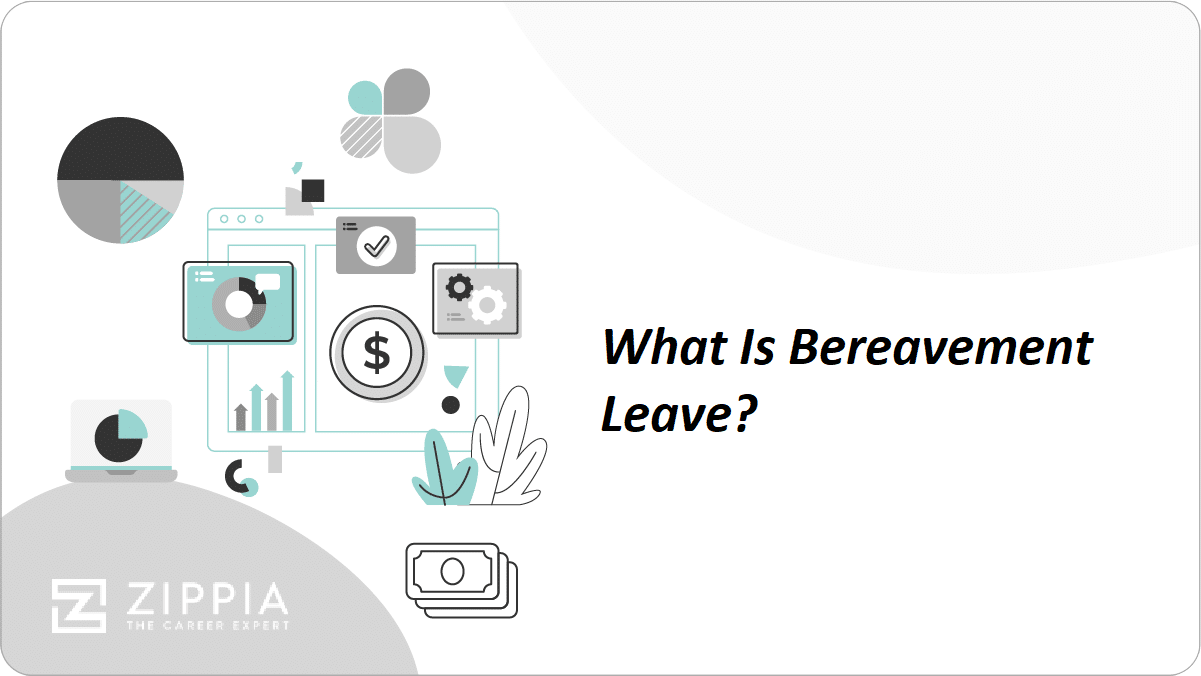Find a Job You Really Want In
Your vacation time is a valuable resource that allows you to relax and do the things you enjoy with the people you love. Imagine getting to do that for multiple weeks or months in a row instead of one or two weeks throughout the year.
You could return to work rejuvenated and ready to take on and even enjoy your responsibilities again.
All this could be possible with a sabbatical, so read on to find out how.
Key Takeaways:
-
A sabbatical is time away from work designed to give you a break long enough to fully disconnect and allow yourself to accomplish something you truly want to do
-
A sabbatical can last anywhere from a few weeks to a year or more.
-
During a sabbatical you could backpack across Europe, learn a new language, or finally pick up that woodworking hobby you’ve been slowly collecting equipment for.
-
Check your companies policy for sabbatical leave and prepare as much information about your trip before presenting it to your boss.

What Is a Sabbatical?
A sabbatical is an extended period of rest from your regular work. It’s a specific time – separate from your regular annual leave – designed to give you a break long enough to fully disconnect and allow yourself to accomplish something you truly want to do.
It might sound counterproductive that companies would allow and even encourage this, but it can be highly beneficial for both individuals and the organizations they work for.
Staying constantly busy and overwhelmed is a recipe for burnout, while intentionally taking a “sabbath” or “rest” is vital to remaining a healthy and productive human being.
Some common reasons people take sabbatical leave include:
-
To travel and learn about new cultures
-
To study a subject you love
-
To spend time with a mentor learning tricks of the trade
-
To get some needed rest
-
To volunteer
-
To pursue a journey of self-discovery
-
To conduct research for a book
Whatever you choose to do, make sure you have a reason for doing it, even if that’s just to give your mind the chance to fully relax for the first time in years.
And, when you’re on a sabbatical, you shouldn’t be checking your work email or worrying about how the office is carrying on without you. This is your chance to disconnect completely. It’ll all be there when you return.
How to Take a Sabbatical From Work
-
Check company policy. If your employer has a specific procedure for taking a sabbatical, you should find out about it as soon as you can so that you can prepare accordingly.
Sometimes, companies require employees to take their sabbaticals during specific time frames or commit to staying at the company for a certain length of time after returning. This is a good thing to note if you plan to do some soul searching during your sabbatical that might result in a career change upon your return.
-
Check your bank account. Not all companies will pay for a sabbatical in full, or even at all. You want to calculate all of your expenses such as cost of living, travel expenses, cost of food, and anything else you might need money for. You will need to have enough money to cover the cost if your employer won’t pay for it, and you also need to remember that you will have bills that still need to be paid.
Make sure you have enough money before making the decision because you don’t want to be stranded in a foreign country and have your credit card declined.
-
Prepare. Before meeting with your boss, make sure you prepare yourself with information. You’ll want to know when you are taking your sabbatical, how long it will be, what the work load will be like for others.
This might be a temporary hire, or it might be a combination of people stepping in to pick up the slack. Either way, though, you’ll need to work to tie up loose ends as much as possible so that the handoff goes smoothly.
-
Let your employer know. Generally, though, you’ll need to let your company know far in advance (months, if not longer) that you plan to take a sabbatical and when you’ll be gone. You should be prepared to answer any questions they will ask. You may have to negotiate why you should be able to take a sabbatical and the benefits that will come with it.
You may have to do paperwork at this stage if they agree so be prepared for anything. Make sure everything is confirmed with them and everything is squared away before you leave.
-
Stay in touch. When you are on your sabbatical, remember that you’re still an employee at the organization. Their policies still apply to you, so don’t take this as an opportunity to go wild with no consequences.
What to Do if Your Company Doesn’t Have a Sabbatical Leave Policy
Some organizations, especially smaller ones, don’t have established sabbatical leave policies. If this is the case, you will need to make your case for why they should allow you to take this time off in addition to your regular vacation days.
To do this, you’ll need to make a proposal to present to your company leaders. You might also need to be okay with taking the sabbatical without pay.
When you’re creating your proposal, consider how your organization will benefit from your time off. Your employer isn’t just going to let you go on sabbatical without some reason to do so. Think through what you hope to accomplish and how it will benefit the organization. This could include:
-
Learning a new skill that will help you better succeed in your role. If you plan to learn a foreign language or take classes at a university, this is an easy way to convince your employer that your time on sabbatical will benefit the organization.
Just make sure you have specifics to share about what you’ll be learning and how you’ll apply your new skills when you return.
-
Researching your current and potential markets. If you want to do some traveling during your time off, first-hand market research might be a good reason to do so. Just make sure you actually use the time for research and not to sit on the beach for two months.
-
Giving yourself time to recharge and come back with fresh ideas and insights. This is an especially reasonable request after you complete a major project or after you’ve been working faithfully at the company for a while.
Most healthy organizations want to reduce burnout and turnover, so they may be willing to let you take time off for this reason alone.
-
Giving other employees the opportunity to step up. This reason is best combined with one or two others, but if you have some up-and-coming employees under you, point out that this would be a great opportunity to let them handle more responsibilities on a trial basis.
You might find that they have some great ideas that will benefit the company.
What to Include in a Sabbatical Leave Policy
If you’re the one who could put a sabbatical leave policy in place in your organization, here are some considerations you’ll want to cover in your policy:
-
What is the purpose of the sabbatical? The answer to this depends on your organization. If you’re struggling to keep employees from burning out, it might be worth letting them use their sabbatical however they please.
On the other hand, you might want to only approve sabbaticals for specific purposes that further the organization’s mission and vision. If your company values charity work, you might specify that sabbatical leave can only be used for approved volunteer work.
Or, you might want to require that employees need to use their break for professional growth. You’ll just need to specify which projects are acceptable.
-
How long will the sabbatical be? Once you’ve figured out what purpose employees’ sabbaticals will serve, you’ll need to determine how long they can be gone.
The most important factor to base this decision on is the goal for the time off, as you need to provide enough time for them to accomplish the goal.
You may also want to base this on how long individuals have worked at the company and set the length accordingly. Just make sure you have a standard policy and aren’t determining it case by case.
-
Who qualifies for sabbatical leave? Similar to determining the length of the sabbaticals, you might want to base this decision on the length of time employees have worked at the organization.
Often companies begin allowing employees to take extended leave after working at the company for five years, but this may not be the best fit for your organization.
In any case, be sure to specificy whether the program applies to hourly employees as well as salaried ones and whether sabbatical is available for employees at all levels, departments, and regions of your company.
-
When can employees take their sabbatical? Some companies allow their employees to take a sabbatical whenever they want. Others only allow them to take time off within a specific window of qualifying for the leave.
This allows organizations to better estimate who will be gone when, but it can also mean that you have more than a few employees out at once if you hired them all at the same time.
-
How do employees get approval for sabbatical leave? Once you’ve determined the parameters for your company’s sabbatical policy, you’ll need to make it very clear how employees can take advantage of it.
Lay out how far in advance they have to seek approval, who they need to ask, what information they need to present in order to get approval, and how their pay and other benefits will be handled while they’re gone.
Once you’ve created a system, you’ll need to communicate it to current and future employees. Make sure they can easily access the policy or at least know who to talk to about their next steps.
Sabbatical FAQ
-
What happens to my job while I’m on sabbatical?
While sabbatical guarantees that a similar position and responsibilities will be available upon your return, your job function or title might change while you’re away. It’s similar to the rules about employees who take time off under the Family and Medical Leave Act (FMLA).
Consider how likely a major shift in your job is before taking a sabbatical. That’s part of the reason why they’re so common in academia, where the role has stayed virtually the same for the last couple of millennia.
-
Sabbatical learning is a period of leave from work dedicated to furthering your skills through education. Employers benefit from this productive time as well, and so are more likely to grant sabbaticals to those who will spend them wisely.
-
Is sabbatical leave good or bad?
Sabbatical leave can be a good thing with the right policies in place.Employers have valid concerns about paying employees for a year off, only to have them quit upon returning from their sabbatical.
And employees have valid worries about their job security and pay when they get back. But overall, if everyone is on the same page about the function and protocol of sabbatical leave, it is a great policy that can reduce burnout and revitalize your team.
-
Yes, technically anyone can take a sabbatical. But if your company doesn’t already have a sabbatical policy in place, then you’ll have to make a case for yourself. If you’re willing to take an unpaid sabbatical, an employer is much more likely to consider the idea.
Also, the length of time you’ve been with your company plays a big role in allowing for sabbaticals, so we don’t recommend asking in your first couple of years with an employer.
-
Is sabbatical leave paid or unpaid?
Sabbatical leave is paid most of the time, but it depends on your company. During your sabbatical, you may only receive a percentage of your regular pay, however.
Even if you don’t get paid, though, there is a lot of value in being able to take a break while knowing that your job will still be there for you when you get back.
-
A sabbatical can last for anywhere from a few weeks to a year or more, but the length of a sabbatical depends on your industry and individual company. For example, colleges and universities often offer their faculty an entire school year to devote themselves to their studies outside the classroom.
For workers in other industries, though, a sabbatical can be anywhere from a month to a year long. Some companies also have policies that use the length of time you’ve worked for the organization as a determiner for how much time you get, just like your regular vacation days.





